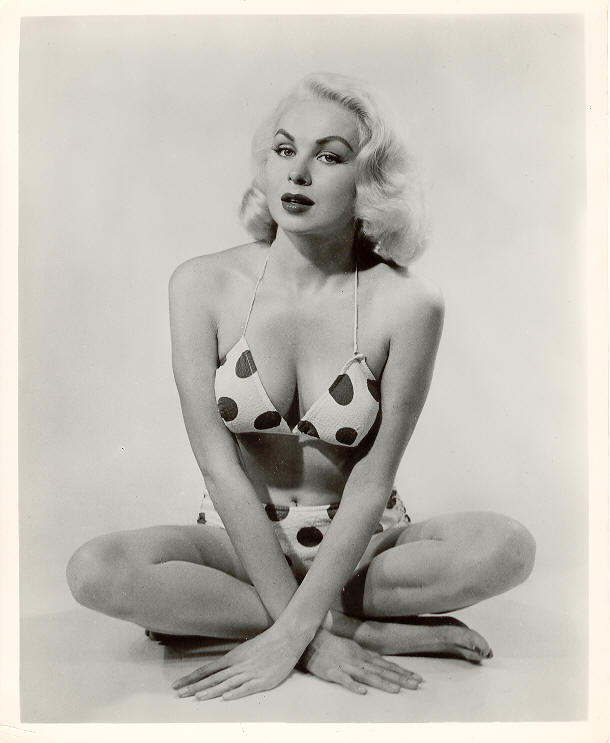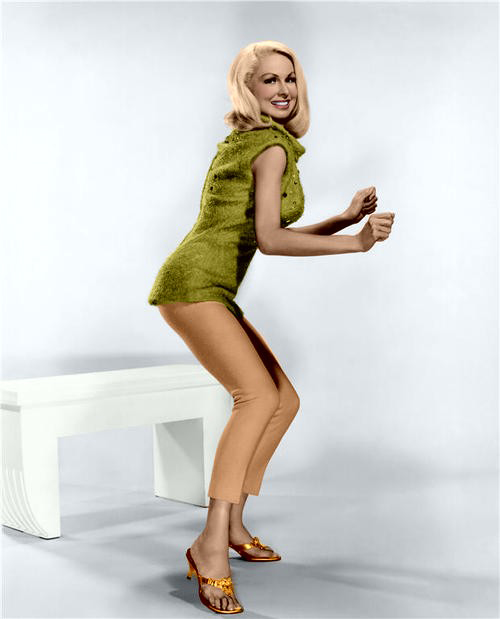The topic of Joi Lansing, a prominent figure in the entertainment industry of the 1950s and 1960s, offers an intriguing exploration into the intersection of art, celebrity, and the evolving societal perceptions of female representation in media.
The Life and Legacy of Joi Lansing: Beyond the Glamour

Born Joy Sue Natol on July 6, 1929, in Hot Springs, Arkansas, Joi Lansing was an American actress, model, and singer who left an indelible mark on the Hollywood scene during the post-World War II era. Her career spanned from the late 1940s to the early 1970s, encompassing various aspects of show business, from film and television to music and fashion.
Joi Lansing's allure extended beyond her physical beauty; she was an accomplished performer, gracing the stages of Broadway and Hollywood alike. Her film credits include roles in The Green Promise (1949), Unchained (1955), and The Girl in the Red Velvet Swing (1955), among others. Additionally, she appeared in numerous television shows, such as The Jack Benny Program, The Red Skelton Show, and The Steve Allen Show, showcasing her talent as a comedian and singer.
The Rise of Joi Lansing: A Hollywood Icon
Joi Lansing’s ascent to stardom was rapid. She was discovered by a Hollywood agent while working as a model in New York City and soon became a fixture in the Hollywood social scene. Her striking features and graceful demeanor made her a sought-after model, appearing in numerous magazines and advertising campaigns. Her distinctive look, often described as a blend of classic Hollywood glamour and modern sophistication, helped establish her as an icon of her time.
In the 1950s, Lansing was frequently featured in men's magazines, such as Playboy and Esquire, where her images became iconic representations of the era's idealized female form. However, Lansing's talent and ambition extended far beyond mere glamour. She aspired to be taken seriously as an actress and singer, and her work in the entertainment industry reflected this drive.
| Magazine Features | Year |
|---|---|
| Playboy | 1953 |
| Esquire | 1955 |
| Show Magazine | 1956 |

The Impact of Joi Lansing’s Image: A Cultural Perspective
Joi Lansing’s image and presence in the media played a significant role in shaping the cultural landscape of the 1950s and 1960s. Her photographs, often showcasing her striking features and curvaceous figure, became symbols of the emerging post-war ideal of femininity. Lansing’s image embodied the notion of the “pin-up girl,” a popular cultural trope of the time, influencing fashion, beauty standards, and even popular art.
However, it is important to view Lansing's image within the context of the era. The 1950s and 1960s were marked by a specific set of societal expectations and restrictions, particularly for women. While Lansing's image was celebrated and admired, it also served as a reminder of the constraints and stereotypes that women often faced in the entertainment industry and beyond.
Exploring the “Nude” Theme: Joi Lansing’s Art and Controversy
The mention of “Joi Lansing Nude” raises an intriguing aspect of her career—her involvement in the world of fine art and the potential controversy surrounding her image. While Lansing was no stranger to the men’s magazine scene, her appearance in more artistic and provocative contexts is a lesser-known aspect of her story.
Lansing posed for various fine art photographers, including George Platt Lynes, whose work often pushed the boundaries of conventional photography. Lynes was known for his artistic nudes, and Lansing's collaboration with him resulted in a series of images that were both sensual and artistic. These photographs, while not widely circulated during Lansing's lifetime, have since become sought-after pieces of art, offering a different perspective on her beauty and talent.
However, the very notion of a celebrity, particularly a female celebrity, engaging in artistic nude photography was (and to some extent still is) a controversial topic. The line between art and exploitation is often blurred, and the perception of women in media has evolved significantly since Lansing's heyday. This raises important questions about the agency of female celebrities, the objectification of women in media, and the evolving definitions of art and beauty.
The Legacy of Joi Lansing: Reflections and Impact
Joi Lansing’s legacy is multifaceted. On one hand, she is remembered as a symbol of Hollywood glamour and an icon of a bygone era. Her image, whether in films, television shows, or magazines, continues to evoke a sense of nostalgia for the Golden Age of Hollywood.
However, a deeper exploration of Lansing's career reveals a woman of talent and ambition, striving to be more than just a pretty face. Her involvement in fine art photography, her musical pursuits, and her commitment to her craft demonstrate a complex and multifaceted individual. Lansing's story invites us to reconsider the stereotypes and expectations often associated with female celebrities, encouraging a more nuanced understanding of their lives and contributions.
Moreover, Lansing's impact extends beyond her own career. Her work, particularly in the context of fine art, continues to influence contemporary artists and photographers, offering a historical perspective on the representation of women in art and media. Her image and story serve as a reminder of the evolving nature of beauty, femininity, and the power of self-expression.
In conclusion, the exploration of Joi Lansing's life and career, particularly the "Joi Lansing Nude" theme, provides a rich and complex narrative. It invites us to reflect on the societal expectations, artistic expression, and the evolving nature of female representation in media. Lansing's story is a testament to the power of individual agency, the complexities of celebrity, and the enduring impact of art and beauty.
What was Joi Lansing’s most notable achievement in her career?
+While Joi Lansing had a successful career in film and television, her most notable achievement might be her impact on the cultural landscape of the 1950s and 1960s. Her image and presence helped shape societal norms and beauty standards, making her an iconic figure of her time.
How did Joi Lansing’s image in men’s magazines influence fashion and beauty standards of the era?
+Joi Lansing’s image, particularly her curvaceous figure and graceful style, became an idealized standard of beauty in the 1950s. Her influence extended to fashion, with designers and stylists drawing inspiration from her look, which often combined classic Hollywood glamour with a modern twist.
What was the significance of Joi Lansing’s collaboration with fine art photographers like George Platt Lynes?
+Lansing’s collaboration with Lynes and other fine art photographers added a new dimension to her image. It demonstrated her willingness to explore artistic expression beyond the confines of mainstream media, offering a more nuanced and complex view of her beauty and talent.